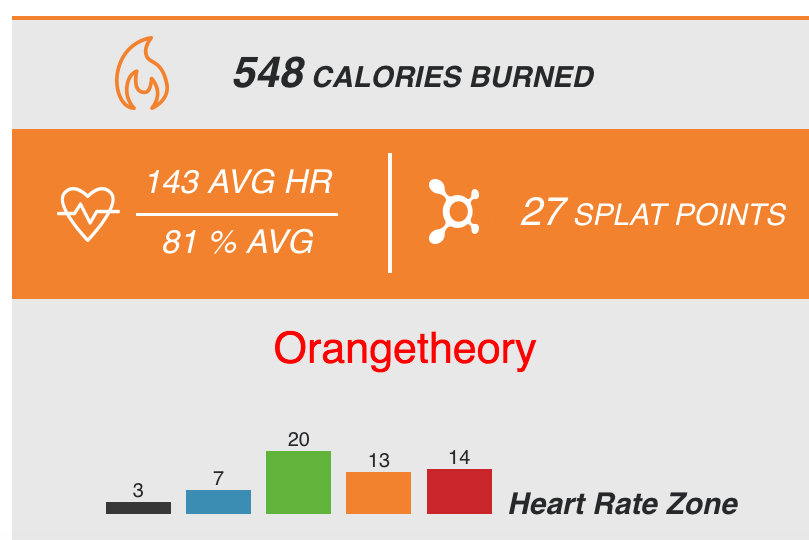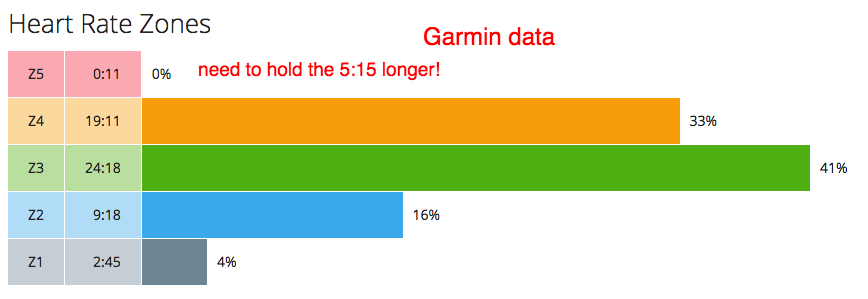Strap or Wrist? Green or Orange?
It also used to be that you could only get your heart rate off of a strap around your chest. Now many devices offer heart rate in the wrist or on the forearm. Chest straps measure the small electrical impulses given off by your heart as the muscles contract. You need good conductivity for a chest strap to work - that means moisture between the sensor and your skin. The wrist based monitors are optical heart rate sensors that actually read your blood flow. Bone, fat and blood will all absorb light differently, so blood flow can be detected and an algorithm determines the heart rate. Readings can be compromised by light leaking in and affecting the sensor, the motion of your arm and even the movement in your wrist.
This study - which you need to pay for to read - says that "depending on the type of activity, the wrist devices were up to 34 beats per minute off". Another study published by the American College of Cardiology done at the Cleveland Clinic had similar findings. "We found these devices can equally over- and underestimate heart rate. The error ranged from +/-34 beats per minute to +/-15 beats per minute, depending on the type of activity." This study included 50 volunteers, mostly Cleveland Clinic employees who were 38 years old on average, They were fitted with some of the most popular devices. They found that same that I found in my sample size of 1. The more vigorous the motion the bigger the difference in reading between the chest strap and the watch. When I was running faster on the treadmill there was a greater variance between the wrist and chest strap and at times it was up to 30 beats!
If you want a good reading on the wrist you need to make sure you have the watch on tight, so that it won't move around. I would tell you I did have it on snug since I had marks on my arm when I took it off, but maybe it was still moving around to create the different reading.
Because I find all of this interesting and I like to educate I am providing the data off both devices (see below) for an Orangetheory class. Jen told me that this class's results were postable as it was the most splat points I have amassed to date. Certainly not what most people get, but when I go to the rower or floor I just can't keep my heart rate high (and of that I am happy).
A few things jump out at me:
1. calories - Garmin says 489 while Mio (OTF's device) says 548. I do have my resting metabolic rate entered in the Garmin, so I am more inclined to believe I was in the mid 400s range.
2. My average HR on the Garmin was 137 and on the Mio it was 143. About 1/2 of the class is on the treadmill and the other half is primarily strength.
3. This was an 'endurance' class. Treadmill time is a ladder going down in interval time with base pace (10:00/mile), push pace (7:30) and all out (6:30-6:40). On the push and all out my HR was in the 150s with one punch up to 166 on the Garmin. Looking at the monitor on the wall the Mio had me up in the 170s and even 180 (I never get there even racing hard). Hence the difference in the zone charts. I did manage to hit a 5:15 pace on my Garmin, but certainly not enough to register even 1% in the red. Both said I was in the green for the greatest percentage of time and I would agree based on how I felt.
4. Caution: I know that the calories listed are not really what my body burns as I happen to know exactly how much fat/carbs my body utilizes at different heart rates. That will be different even than the Garmin reading. What I worry about (and I do worry about these things) is that people who take a class and look at all the red and orange will think woo hoo I burned all those calories and now I have an after burn, so let me go eat. STOP. After burn as many like to call it is excess post-exercise oxygen consumption (EPOC) or the number of calories expended above resting values after a workout. You may hear you'll get a greater burn for 24 or even 48 hours after an intense class. Well guys you might get a better burn, but that all depends on your fitness. Ladies not so much. Research shows that energy expenditure in women at rest and during exercise varies with the menstrual phase and is much shorter than for men. Typically, resting energy expenditure is lowest 1 week before ovulation and highest during the 14-day luteal phase following ovulation, affecting EPOC accordingly. Other research has shown that the window is much shorter in the range of 1- 8 hours. In this study the effect was a mere 30 minutes of acute response. Some good news? Most classes are an hour and this study found that EPOC was 2x that of a 20 or 40 min workout. More on this to come!
Bottom line? You need to understand the device you are using, how your zones are being calculated and what you hope to get out of the data. More on heart rate zones here.




 RSS Feed
RSS Feed